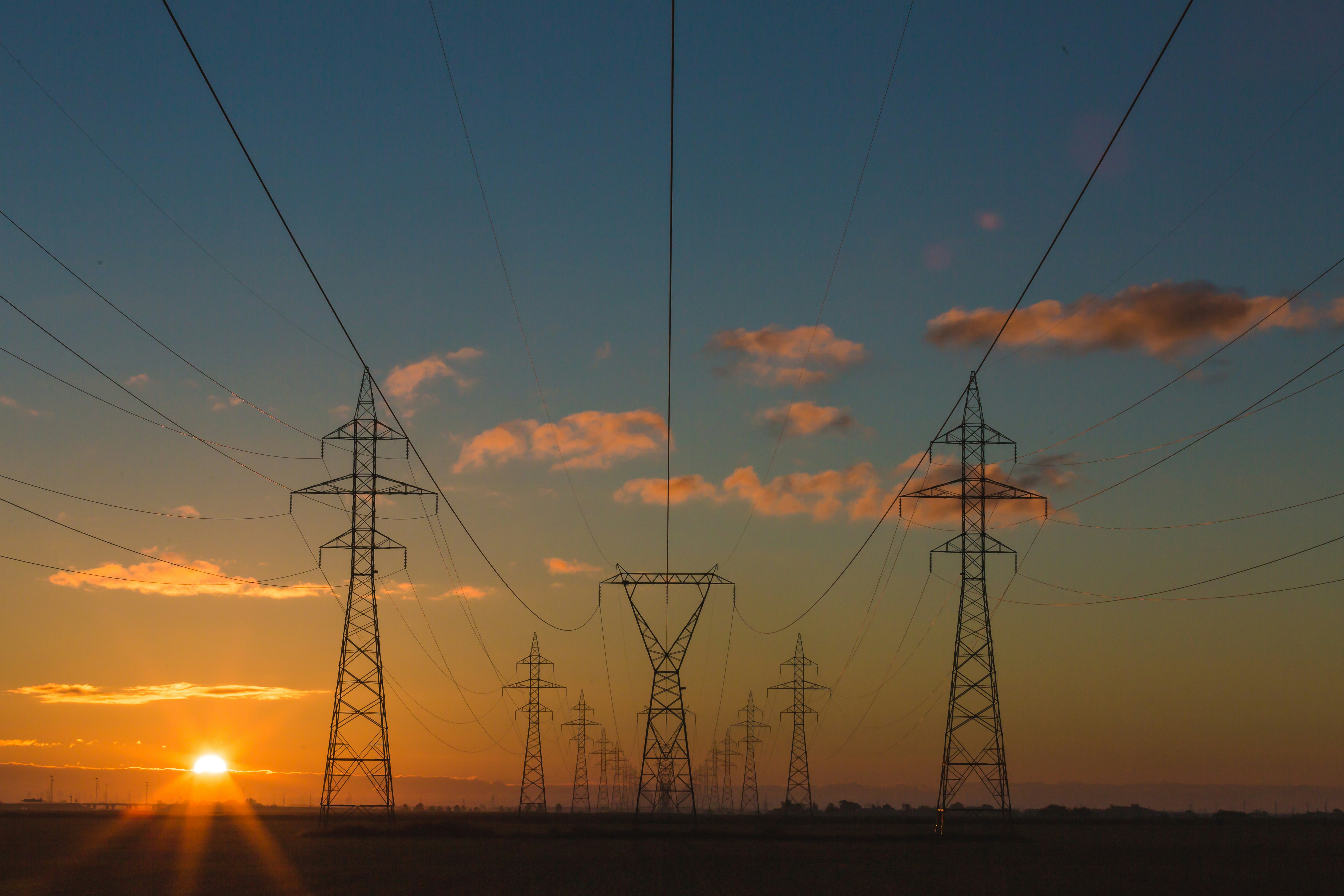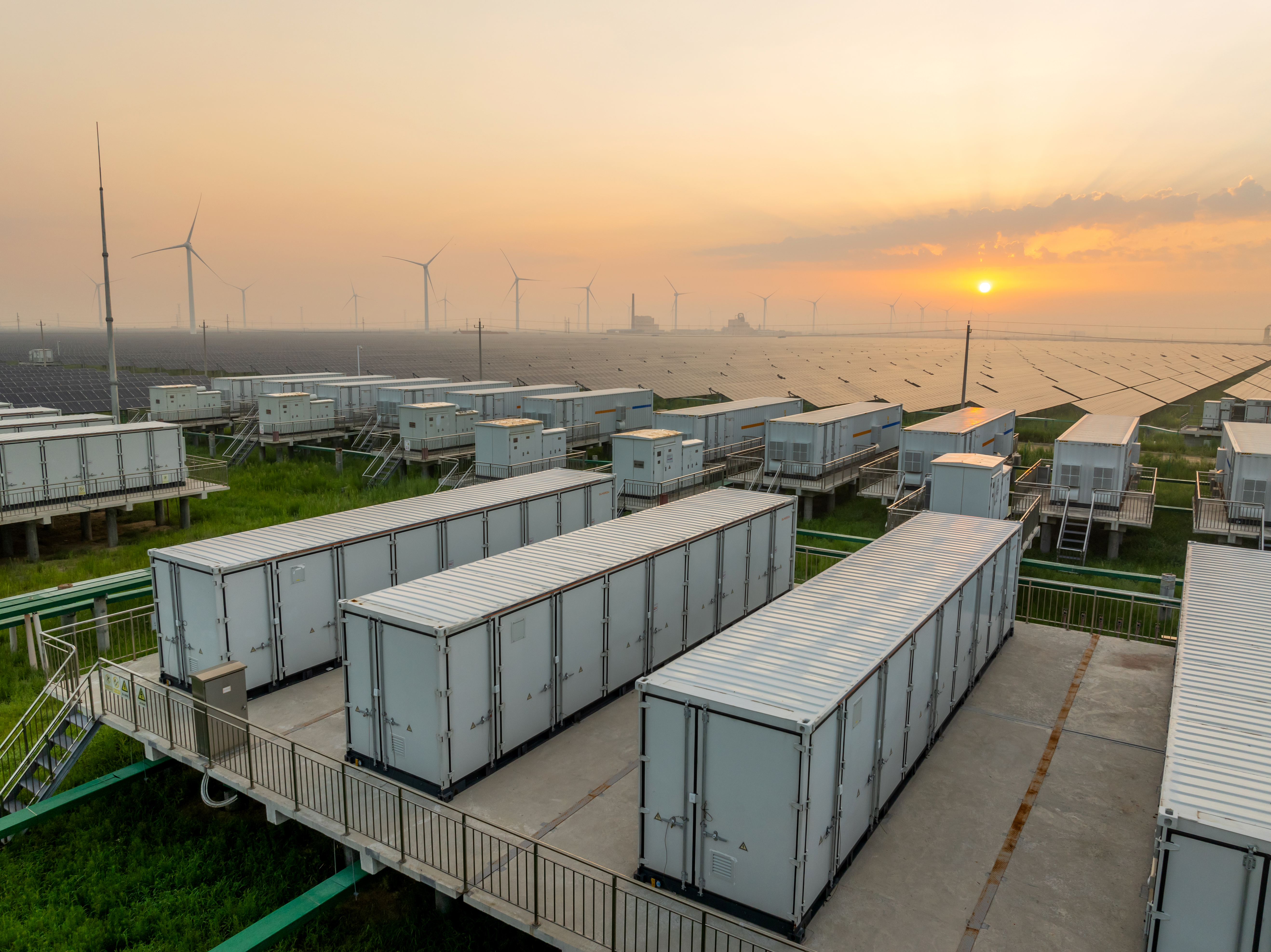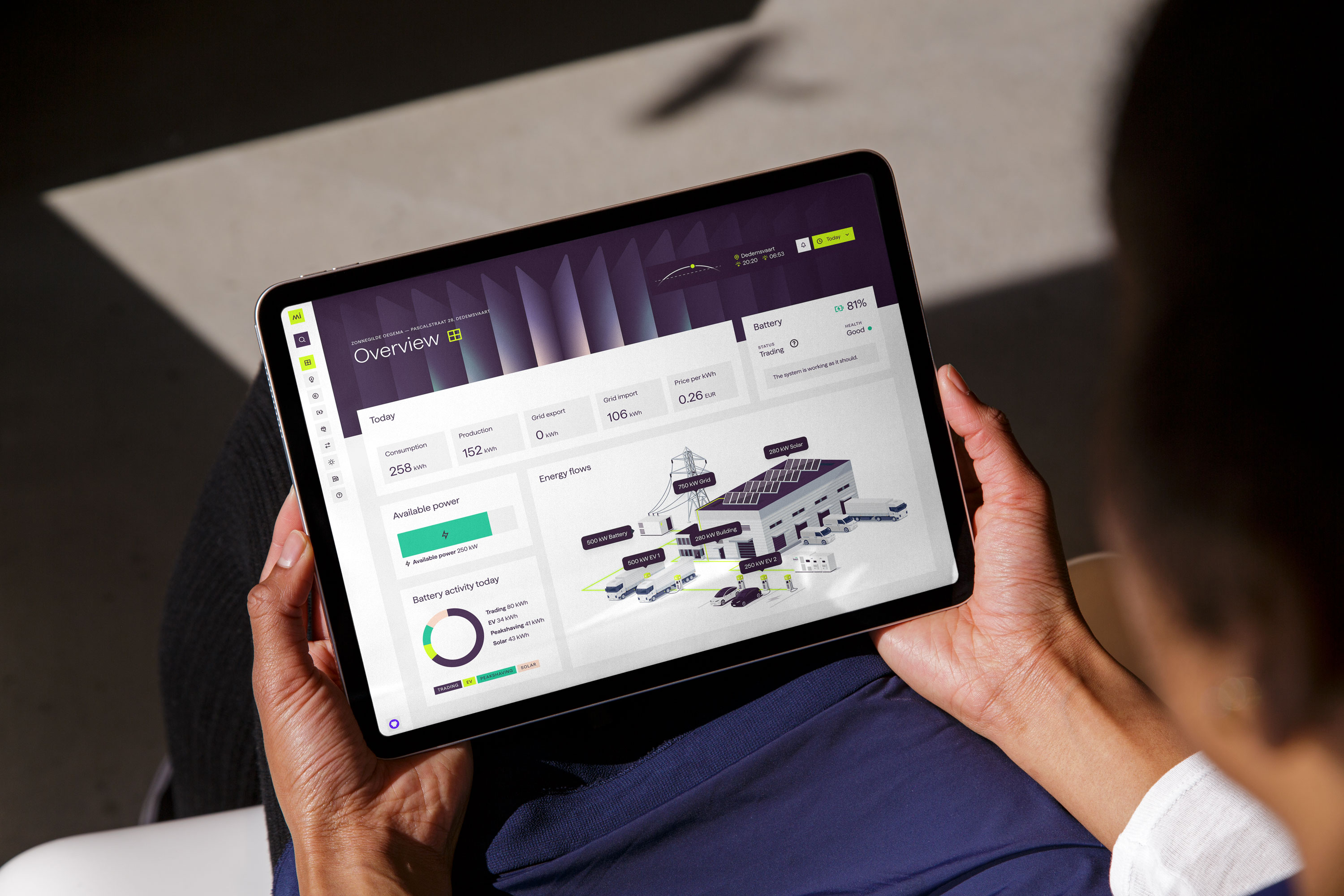Energy prices on the rise? How to get more out of your existing connection

The energy transition is in full swing. Businesses are investing in sustainable solutions such as solar energy, heat pumps, and the electrification of their vehicle fleets. At the same time, entrepreneurs want to expand, reduce costs, and protect themselves against an increasingly volatile energy landscape. One factor is becoming increasingly critical: how you manage your grid connection.
With highly fluctuating energy prices, growing concerns about supply reliability, and new regulations on peak consumption, it’s more important than ever to manage your energy consumption smartly. Fortunately, there are ways to get the most out of your existing grid connection and energy assets: smart software combined with battery storage.
A volatile energy market requires flexibility
In recent years, businesses have faced unprecedented fluctuations in energy prices. The causes include geopolitical tensions, variable gas prices, and unpredictable availability of renewable energy. This volatility leads to uncertainty in investment decisions, as well as higher and less predictable energy costs.
At the same time, the risk of grid instability is increasing; power spikes, local overloads, or limited feed-in capacity. Especially during periods of high demand or low renewable output, companies can be directly affected. Meanwhile, grid operators are introducing new tariff structures that impose higher charges on peak usage. As a result, the need for control, cost-efficiency, and supply security is growing fast.
The core of the issue: new rules on peak consumption and grid limitations
For companies with a high-consumption grid connection, keeping peak usage under control is becoming increasingly important. Under the new Belgian grid tariffs, particularly with the renewed focus on contracted capacity, grid operators are more often setting a contractual limit on how much electricity you can take from or return to the grid. This is established in the connection and transport agreement. Exceeding this peak capacity has immediate financial and operational consequences:
- Significant additional costs and fines for structural exceedances
- Higher rates for those who regularly exceed the limit
- Restrictions on expanding activities or adding electrical installations
- Difficult access to additional grid capacity in overloaded areas
This evolution is part of a broader trend where grid operators encourage businesses to spread their grid use and avoid peaks. Even though the physical infrastructure is often only fully utilized during brief peak moments, these peaks are now more strictly regulated to ensure reliable supply for all.
In short: if you don’t control your peak usage, you risk higher costs, delays, or constraints. Smart energy management is becoming essential under this new regulatory framework.
The solution: smart energy management and battery storage
Fortunately, there are various ways to maximize your grid connection. The most effective method is using an energy management system (EMS) combined with batteries as a flexible buffer. Together with your grid connection, they form a system that continuously monitors energy consumption and actively limits peak usage.
What is an Energy Management System?
An EMS is a software platform that monitors and manages a company’s energy consumption and generation. It ensures that batteries, solar panels, EV chargers, heat pumps, and production lines work together efficiently to prevent peak loads and reduce costs. The data required for this is collected by energy meters on-site, which measure consumption and energy feedback every 20 milliseconds.
Key functionalities of an EMS:
- Monitoring: Provides real-time insight into energy consumption and the performance of assets like solar panels.
- Optimization: Smart scheduling of processes to minimize costs.
- Integration: Connects with assets such as batteries and solar panels to maximize self-generated energy utilization.
Batteries: The flexible buffer
A battery acts as a buffer in the energy system. It stores excess energy when demand is low and supplies energy during peak times to relieve the grid.
Benefits of battery storage:
- Peak shaving: Reducing peak consumption by using stored energy during high-demand periods.
- Sustainable energy storage: Excess solar or wind energy is stored instead of being fed back into the grid.
- Continuity: Provides backup power during outages for critical processes.
- Cost reduction: Charging the battery during low-cost off-peak hours and discharging during expensive peak times optimizes energy costs and revenues.
Maximizing energy assets
With an EMS and battery combination, other energy assets like solar panels, EV chargers, and heat pumps can also be used more efficiently. Smart management leads to cost savings and increased sustainability. Here are three examples:
Solar panels: from grid deed-in to self-consumption
Solar panels generate most energy around midday, while businesses often need more power at the beginning and end of the day. This results in solar energy being fed back into the grid at low or even negative tariffs. An EMS with battery storage optimizes this process by:
- Storing excess energy: Charging the battery during peak solar production.
- Using stored energy at peak demand: Preventing high grid consumption costs.
- Minimizing feed-in: Activating EV chargers or heat pumps during peak solar production to reduce surplus energy.
EV chargers: smarter fleet charging
Logistics companies transitioning to electric fleets with EV chargers and solar panels often experience peak energy consumption around 5:00 PM, when vehicles return and need to be charged overnight. This leads to excessive contracted capacity violations and high network costs. An EMS with battery storage provides a solution by:
- Spreading charging times: Distributing charging sessions throughout the evening and night to prevent peak loads.
- Using battery storage: Supplying power from the battery during peak periods.
- Utilizing solar energy: Storing excess solar power during the day and using it for charging later.
The financial picture
Investing in an EMS and battery system requires an upfront investment but often pays off quickly. iwell assists companies by developing a tailored business case based on their energy profile, calculating costs, savings, and potential revenue. Key factors considered include peak and off-peak usage, essential processes, and flexible energy consumption.
Quick implementation
Implementing an EMS and battery storage system can be done relatively quickly, depending on the complexity of the installation. Some suppliers can have systems operational within weeks if the necessary materials are available.
Businesses face the challenge of becoming more sustainable while managing costs in an era where grid congestion hampers growth and innovation. Fortunately, upgrading your grid connection is not the only solution. By investing in an EMS and battery storage, companies can maximize their existing connection, reduce energy costs, and adapt more flexibly to future changes. This not only helps achieve sustainability goals but also ensures security and continuity in an ever-evolving energy landscape.
Want to get a customized business case? Get in touch! We'll make sure we find a solution for you.



